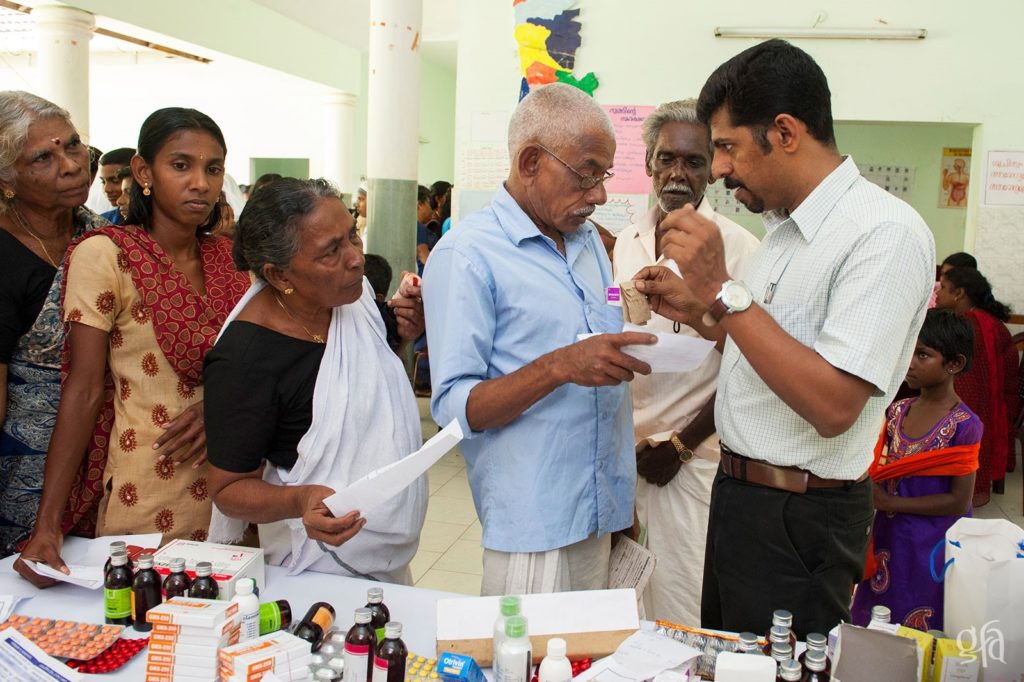malariNEW DELHI – The paradox of disease is that on the one hand it is an opportunity to share the gospel and on the other hand, it is an enemy that can rob us of the time needed to reach those afflicted. South Asia is the poster child for this paradox.

As you read this information about infectious diseases rampant in South Asia, pray for these things:
- The work of doctors, healthcare workers, hospitals, clinics, and medical camps, particularly those sponsored by Gospel for Asia (GFA)-supported workers in the field.
- Greater availability of medications and treatments for saving lives.
- Improvement of poor sanitation conditions that are leading contributors to many of the diseases that plague South Asia.
- Open doors for Gospel for Asia (GFA)-supported workers to provide clean water and sanitation to help create a healthier environment.
- Treatment and prevention methods as a means of introducing the love of Jesus for the saving of souls.
You will be familiar with some of these diseases. Others, not so much. Regardless, they are all serious threats in the heavily-population South Asian subcontinent.
- 280 million people in South Asia suffer from soil-transmitted helminths, aka roundworm, whipworm, and hookworm. People living in areas where the soil is contaminated with human excrement are most susceptible to infection.
- More than 1,158 people in South Asia die per day from tuberculosis. That is one person every 15 seconds.
- South Asians constitute 35 percent of the total cases of malaria. More than 90 percent of South Asians are at risk of contracting the disease. It is estimated that as many as 180 million may be suffering from malaria in South Asia.
- China, Indonesia, and India account for more than 60 percent of the 120 million people infected with and the 750 million at risk for filariasis. Americans are more familiar with one of the effects of the disease, elephantiasis. The condition is vector-borne and is predominately in areas where there is an abundance of stagnant water.
- Dengue fever is the world’s fastest-spreading vector-borne disease, particularly in South America and South Asia. Once again, contaminated water is the common source from which mosquitoes obtain and transmit the virus.
- Visceral leishmaniasis is another vector-borne disease. Although not commonly known among Americans, it has an exceptionally high mortality rate and is the second deadliest parasitic disease in the world, exceeded only by malaria.
- Research by the World Health Organization indicates that more than nine million people in South Asia have Hepatitis B, but fewer than 5,000 are receiving treatment.
- Leptospirosis is typically contracted by drinking or bathing in contaminated water. It can also be spread by exposure to cattle or rat urine-contaminated soil. It enters the body through breaks in the skin.
These diseases are representative of the many associated with developing countries. Because so many are connected to unsanitary conditions, we hope that government initiatives, like the Swachh Bharat campaign in India, will continue to improve water and sanitation conditions in both rural and urban areas.
Gospel for Asia (GFA)-supported field workers are also committed to providing Jesus Wells and sanitary toilet facilities as we are able.
Please pray as we represent the hands and feet of Jesus by doing our part on His behalf and for His glory.
To read more news on Health Issues on Missions Box, go here.
Sources:
- Your Article Library.com, Top 13 Common Communicable Diseases Found in India
- Outbreak News Today, India: Top infectious disease concerns in world’s second most populous country
- Health Issues India, Infectious Diseases
- The World Health Organization, Soil-transmitted helminth infections
Image Source:
- Gospel for Asia, Photo of the Day
For more information about this, click here.




